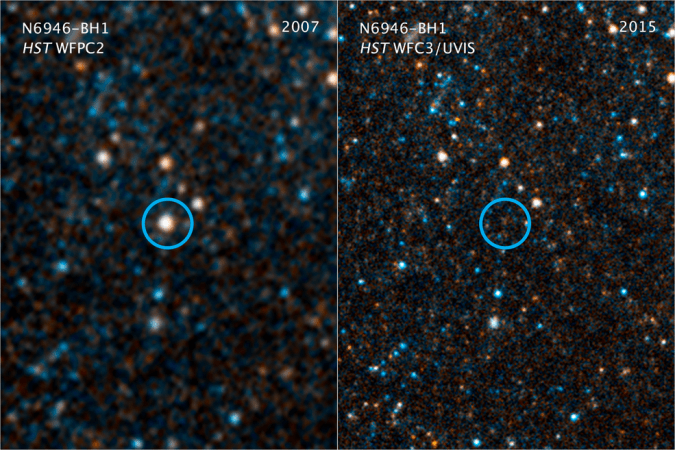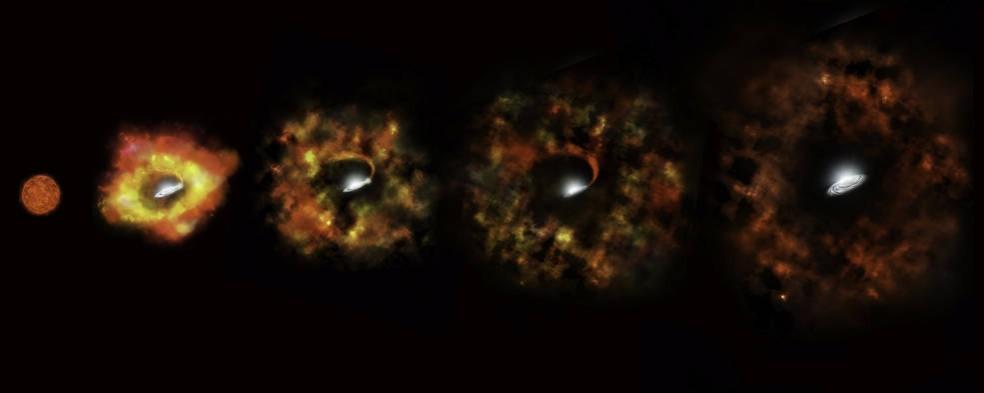
In a latest finding, astronomers have discovered that a dying star resurrected as a black hole. The star, dubbed N6946-BH1, is present at a distance of 22 light-years from Earth in NGC 6946, a spiral galaxy.
Also Read: NASA's Juno probe discovers Earth-sized cyclones on gas-giant Jupiter
NGC 6946 has been nicknamed 'Fireworks Galaxy' as astronomers often spot supernova taking place there. Supernova SN 2017eaw, which was discovered on May 14, is present in NGC 6946, and it is now near maximum brightness.
The astronomers say that N6946-BH1 was spotted radiating weakly in 2009 and disappeared by 2015. This discovery was made with the help of Large Binocular Telescope (LBT) along with NASA's Hubble and Spitzer space telescopes.
These telescopes were used to analyse the remains of the vanquished star to find out if it vanished from the sight, a NASA statement revealed.
The star was 25 times more massive than Sun and it should have died by exploding with extremely bright supernova, which is required for black holes to form. This phenomenon points towards it being a failed supernova.
"Massive fails like this one in a nearby galaxy could explain why astronomers rarely see supernovae from the most massive stars," said Christopher Kochanek, professor of astronomy at The Ohio State University and the Ohio Eminent Scholar in Observational Cosmology.
Kochanek is the team lead of a cohort of astronomers who published their latest results in the Monthly Notices of the Royal Astronomical Society.
According to the NASA, around 30 percent of such stars are likely to disintegrate into black holes quietly without turning into supernova.
"The typical view is that a star can form a black hole only after it goes supernova," Kochanek explained. "If a star can fall short of a supernova and still make a black hole that would help to explain why we don't see supernova from the most massive stars."

The researchers tried to find out if N6946-BH1 didn't turn into a black hole and was simply hiding behind a dust cloud. After the astronomers carried out the LBT survey for failed supernovas, they used the Hubble and Spitzer space telescopes to find out if the star was still there, but had dimmed. They even used Spitzer to detect if any infrared radiation was emitted from the spot. But these estimations turned out to be negative and it was concluded that the star must have turned into a black hole.
"N6946-BH1 is the only likely failed supernova that we found in the first seven years of our survey. During this period, six normal supernovae have occurred within the galaxies we've been monitoring, suggesting that 10 to 30 percent of massive stars die as failed supernovae," said Scott Adams, a former Ohio State student.
"This is just the fraction that would explain the very problem that motivated us to start the survey, that is, that there are fewer observed supernovae than should be occurring if all massive stars die that way," Adams added.
"I suspect it's much easier to make a very massive black hole if there is no supernova," co-author Krzysztof Stanek concluded.
Star Gives Birth to Possible Black Hole in Hubble and Spitzer Images:














